Yes, to a degree. Separation anxiety is a normal emotional stage of development that starts when babies begin to understand that things and people exist even when they're not present – something called "object permanence."
At certain stages, most babies or toddlers will show true anxiety and be upset at the prospect – or reality – of being separated from a parent. If you think about separation anxiety in evolutionary terms, it makes sense: A defenseless baby would naturally get upset at being separated from the person who protects and cares for him.
In many ways, attitudes about babies and separations are cultural. Western countries tend to stress autonomy from a very early age. But in many other cultures, infants are rarely separated from their mother in the first year of life.
Regardless of the origins of this developmental stage, it's frustrating for babies and parents. The good news is that separation anxiety will pass and you can take steps to make it more manageable. And in the meantime, enjoy the sweetness of knowing that to your child, you're number one.
When does it most commonly occur?
Babies can show signs of separation anxiety as early as 6 or 7 months, but the
crisis age for most babies peaks between 10 to 18 months. Most commonly, separation anxiety strikes when you – or your partner – leave
your child to go to work or run an errand Your baby can also experience separation anxiety at night, safely tucked in her
crib with you in the next room. Separation anxiety usually eases by the time
babies are 24 months old.
How can I help my baby through it?
Several options are available to parents:
Minimize separations as much as possible and take your baby along if he
seems to feel anxious. With this option, you're basically waiting for
your baby to outgrow this stage.
Set up childcare with people
your baby is familiar with. If you have to leave your baby – for
example, to return to work – try leaving him with people he already knows, like
his father, grandmother, or aunt. Your baby may still protest, but he might
adjust more easily to your absence when surrounded by well-known
faces.
Let your baby get to know a new caregiver first.
If you need to leave your child with someone he doesn't know, give him a chance
to get to know his caregiver while you're still around (see details below).
How should I prepare my baby for separations?As with any transition, give your baby an opportunity to gradually get used to the idea. Whether you're leaving her with a family member or a paid childcare provider, try the following suggestions:
Practice at home. It'll be easier for your baby to cope with your absence if she's the one who initiates a separation. Let her crawl off to another room on her own (one where you're sure she'll be safe unsupervised briefly) and wait for a couple of minutes before going after her.You can also tell your baby you're leaving a room, where you're going, and that you'll be back. Either way, your child will learn that everything will be okay when you're gone for a minute or two – and that you'll always come back.
Build in time for your baby to get comfortable. Hire a new sitter to visit and play with your baby several times before leaving them alone for the first time. For your first real outing, ask the sitter to arrive about 30 minutes before you depart so that she and the baby can be well engaged before you step out the door.
Employ the same approach at a daycare center or at your nursery, place of worship, or health club.
Always say goodbye. Kiss and hug your baby when you leave and tell her where you're going and when you'll be back, but don't prolong your goodbyes. And resist the urge to sneak out the back door. Your baby will only become more upset if she thinks you've disappeared into thin air.
Keep it light. Your baby is quite tuned in to how you feel, so show your warmth and enthusiasm for the caregiver you've chosen.
Try not to cry or act upset if your baby starts crying – at least not while she can see you. You'll both get through this. The caregiver will probably tell you later that your baby's tears stopped before you were even out of the driveway.
Once you leave, leave. Repeated trips back into the house or daycare center to calm your baby will make it harder on you, your child, and the caregiver.
Try a trial at first. Limit the first night or afternoon out to no more than an hour. As you and your baby become more familiar with the sitter or the childcare setting, you can extend your outings.




 Place the pads of two or three fingers in the center of the baby's chest, just below an imaginary line running between his nipples. To do a chest thrust, push straight down on the chest about 1 1/2 inches. Then allow the chest to come back to its normal position.
Place the pads of two or three fingers in the center of the baby's chest, just below an imaginary line running between his nipples. To do a chest thrust, push straight down on the chest about 1 1/2 inches. Then allow the chest to come back to its normal position. With the baby still lying on his back, place the pads of two or three fingers in the center of his chest, just below an imaginary line running between his nipples.
With the baby still lying on his back, place the pads of two or three fingers in the center of his chest, just below an imaginary line running between his nipples. Repeat the sequence of 30 compressions and two breaths. If you're alone with the baby, call 911 or the local emergency number after two minutes of care.
Repeat the sequence of 30 compressions and two breaths. If you're alone with the baby, call 911 or the local emergency number after two minutes of care.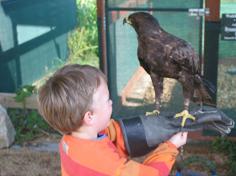 Then a drive to nearby
Then a drive to nearby 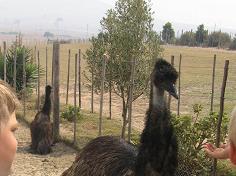 Have a leisurely drive out to the North of Cape Town to the
Have a leisurely drive out to the North of Cape Town to the 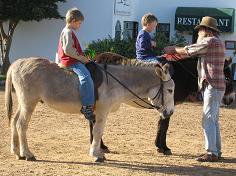 Then head straight away to
Then head straight away to 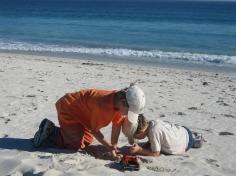 Then you definitely must go to Simonstown’s Boulders Beach, where
your kids will love to swim in the shallow waters with
Then you definitely must go to Simonstown’s Boulders Beach, where
your kids will love to swim in the shallow waters with 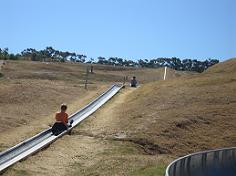 This is one outdoors activity especially for the bigger kids. But
the little ones will enjoy that too, if mummy or daddy joins them.
This is one outdoors activity especially for the bigger kids. But
the little ones will enjoy that too, if mummy or daddy joins them.
 At Cape Town’s
At Cape Town’s